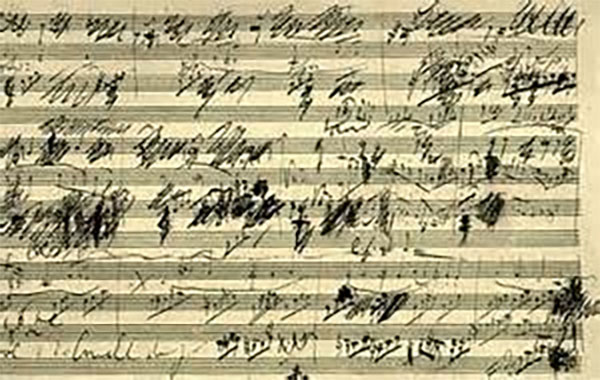This may seem like an obvious question, but it is a really interesting question in a number of ways that I’ll explain. All vibrating objects produce pitches and those pitches are lower if the object is bigger and they’re higher if the object is smaller. It’s simple physics. With pianos, you notice particularly on concert grand pianos, the very highest treble strings are very short and they get longer and longer throughout the entire scale design until you have the very long bass strings on a nine foot piano. The bass strings are able to produce those low frequencies from their sheer length like the pipes on pipe organs; the large pipes produce low frequencies and the the small pipes produce high frequencies.
It’s the same reason why women and children tend to have higher voices than men because being bigger (including the vocal cords) produces lower pitched voices. Bigger things make lower sounds. Where it gets really interesting is the fact that you can have a baby grand where the strings are pretty much the same length once you get to the middle of the keyboard on down. How do they achieve the low notes out of a smaller piano? They make the strings thicker in the bass to overcome the fact that they’re not getting as long as they need to be.
In fact, even a concert grand piano doesn’t necessarily have the difference in length of strings you would need to double the length of the strings for each octave down on the keyboard. So, you would need strings going twice the length throughout the entire piano for every octave which would produce a longer piano than nine feet depending upon the starting length of the highest treble strings if it were done by the length of the strings alone. It could be difficult to excite the soundboard with such long strings. There are other aspects of piano design and acoustical science that just don’t enable that to happen. It would be an interesting experiment in the virtual world with programs like PianoTeq to create virtual pianos that don’t exist in the real world with incredibly long strings.
I hope this has been enlightening for you. Thanks for joining me, Robert@LivingPianos.com 949-244-3729




